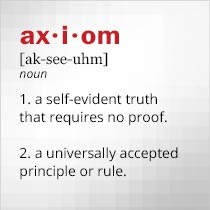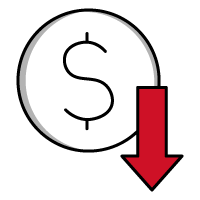Semiconductor Measurements Characterize Devices and Materials
April 04, 2022
.jpg) |
Semiconductor testing usually means active devices and it often refers to integrated circuits (ICs). But it can also apply to discrete devices, such as high-power transistors, and characterizing semiconductor materials such as substrates and wafers. Because semiconductor testing covers such a variety of devices under test (DUTs), it involves many different measurements and, depending on the DUT, often many different test units to perform the measurements.
What kind of measurements are part of semiconductor testing? Gaining a better understanding of a semiconductor or the material it is fabricated on requires evaluating it under different operating conditions, such as different voltage (V), current (I), and power levels. In some cases, testing is performed to find a semiconductor’s safe operating levels as well as its stress levels, where it begins to suffer degraded performance. Essential semiconductor testing involves monitoring of a DUT’s I and V responses and requires test equipment with tight control over wide ranges of I and V and often other electrical parameters, such as capacitance (C) and impedance.
Semiconductors are essential to modern electronics and can be found in almost all electrical products throughout many industries, including aerospace, commercial, industrial, medical, and military markets. They come in many forms, with diodes, optocouplers, rectifiers, and transistors among discrete devices. Semiconductors are based on many different substrate materials, including the silicon, silicon carbide (SiC), gallium arsenide (GaAs), and gallium nitride (GaN) substrates that form many types of ICs such as amplifiers and digital logic devices. Semiconductor testing can involve many different types of measurements to characterize a complex IC or the wafer upon which it is fabricated, but for characterizing a simpler device such as a diode, testing starts with a basic semiconductor parameter analyzer capable of tracking I and V responses, such as the Keysight 4155C Semiconductor Parameter Analyzer.
The Keysight 4155C is a basic but essential semiconductor measurement tool. It can be used as a standalone unit operated via its internal microprocessor, or by an external personal computer (PC) with a GPIB/USB cable connector. In either case, measurements are orchestrated by the I/CV 2.1 Lite measurement software, supplied in a basic form but also available as a full version. The model 4155C supplies and analyzes I and V over wide measurement ranges and with high accuracy. The modular unit works with various source-measure units (SMUs) to achieve different measurement ranges. Voltage can be set from a lower limit of ±2 V to a higher DC voltage range of ±100 V with many ranges between. Voltage can be set with very high resolution no matter the range, with 2-μV resolution in the ±2-V range and 100-μV resolution in the ±100-V range. The model 4155C also offers a wide choice of current adjustment ranges, from the lowest of ±1 nA to the highest of ±100 mA.
When Agilent Technologies the company upgraded to Keysight Technologies the company, they upgraded the model 4155C as the Keysight B1500A Semiconductor Device Analyzer, a more highly software powered I-V analyzer designed for all-around semiconductor device characterization. It also employs a modular architecture like the 4155C, although with a few more available modules. To make the simplest comparison between the two units, the B1500A is more of a computer than the 4155C: both offer outstanding I-V measurement power although the 4155C invites “hands-on” use while the B1500A runs on the Microsoft Windows 7 operating system within its internal computer or an external PC, uses EasyEXPERT group+ characterization software, and provides results on a large 15-in. touch screen. The test software is written around a clear and simple graphical user interface (GUI) that includes many automated test routines for I-V measurements and even for capacitance-voltage (C-V) and dynamic pulsed I-V measurements.
Depending upon the SMUs plugged into its mainframe and its 10 available module slots, the B1500A can be configured for measurements from 0.5 μV to 200 V and from 0.1 fA to 1.0 A. For high-power pulsed measurements, this unit can generate pulse widths as short as 50 μs and capture a DUT’s pulsed responses with sampling rates to 200 MSamples/s. With the proper SMUs, the B1500A can automatically switch between I-V and C-V measurements and can also perform alternating-current (AC) impedance, capacitance-versus-time, and capacitance-versus-frequency measurements over a range of 1 kHz to 5 MHz. In addition to the B1500A, a wide range of SMU modules are available from Axiom Test Equipment (www.axiomtest.com) and Axiom’s account managers are readily available to provide guidance on the optimum choice of modules depending on DUTs and test requirements.
Diving into Devices
The Keithley 4200A-SCS Parameter Analyzer, also employs a flexible, modular approach to semiconductor testing, fitting SMUs into a mainframe as needed to adapt to different test requirements. It runs with the company’s 4200A-SCS Clarius™ test software and a wide range of automated measurement functions for I-V, C-V, and dynamic pulsed I-V measurements. As examples of its modular capabilities, when the mainframe is equipped with the medium-power I-V SMU, it provides a voltage range of ±210 V with as much as 100 mA current. With the higher-power SMU, it covers the same ±210-V range with as much a 1 A current. With the C-V Multi-frequency Capacitance Unit (CVU) module, the Keithley 4200-SCS can perform AC impedance measurements including C-V, capacitance-time, ad capacitance-frequency measurements from 1 kHz to 10 MHz. With the Multi-Switch Pulsed I-V Ultra-fast Pulse Measure Unit (PMU), the 4200-SCS provides two independent or synchronous channels of pulsed I-V source and analysis capability over a ±40-V (80-V peak to peak) voltage range and ±800-mA current range. It can track minimum pulse widths of 5 ns at sampling rates to 200 MSamples/s. For generating precise pulses, the PMU is aided by an integrated arbitrary waveform generator with 10-ns resolution.
When specific semiconductor behavior must be analyzed, such as the capacitance of a device, a unit such as the Boonton 7200 Series Capacitance Meter, may provide more meaningful results, especially at higher frequencies than general-purpose semiconductor parameter analyzers. The 7200 Series meter measures capacitance from 0 to 2000 pF with worst-case resolution of 1 pF. It performs measurements at 1 MHz with a crystal-controlled oscillator and can display external bias voltage for a DUT over a range of ±60 V. It can calculate and display equivalent parallel and series resistance, and series capacitance. This is also a suitable test tool for evaluating semiconductor materials, since it can also measure conductance over a range of 0 to 2000 μS and can calculate dissipation factor (Df) and quality factor (Q).
Impedance matching is an essential step in applying many semiconductors, and the Keysight E4991B Impedance Analyzer can evaluate numerous impedance parameters for DUTs at source frequencies from 1 to 500 MHz in the standard test equipment and with frequency-extended versions to 1 and 3 GHz. It can measure impedance from 120 m? to 52 k? at 1 MHz. For active device impedance measurements, some of the Keysight E5071C network analyzers are available with integrated bias tees in addition to a choice of two- and four-port test sets for characterizing many different packaged semiconductors.
When fully characterizing an active semiconductor device, the Tektronix TTR506A Vector Network Analyzers (VNAs), squeezes an enormous amount of measurement power inside a unit that can fit into a backpack with the aid of an external PC and a USB connection, this VNA can make two-port, two-path S-parameter measurements from 100 kHz to 6 GHz with a better than 122-dB dynamic range. It can calculate all four of the S-parameters that are so often used in developing matching circuits for active semiconductors not already matched to the 50-? impedance commonly used in higher-frequency circuits. This impressive unit weighs less than 3.5 lbs as the result of constructing a 6-GHz VNA on a single PCB. And to aid active-device measurements, the VNA has a built-in bias tee, with bias power supplied via rear-panel BNC connectors.
Semiconductor measurements can be as simple as I to V, but typically there is much more to consider, depending upon the DUT and the operating conditions. The test equipment presented here are a few samples of many semiconductor measurement solutions available from Axiom Test Equipment (www.axiomtest.com). Axiom can help you make the best choice in the test gear needed to better know your semiconductors.
Back to BLOG








